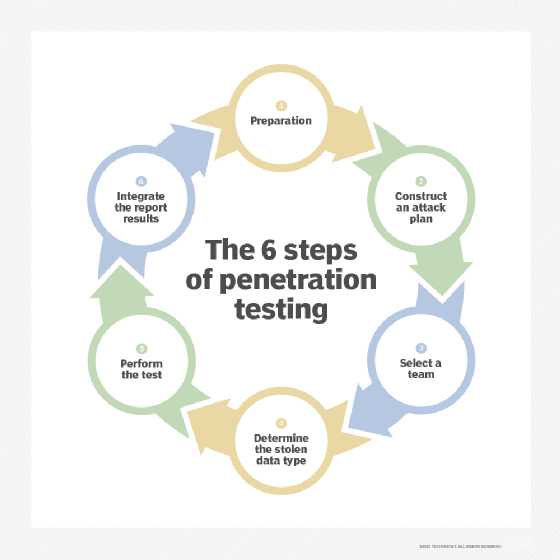API testing
Types of API tests
Various types of tests can be performed to ensure the API is working appropriately. Tests range from general to specific analyses of the software. Below are some examples of these tests.
1. Validation testing
Validation testing analyzes API projects based on three distinct sets of criteria: the API's usability as a product, its transactional behavior and its operational efficiency. Here are some typical questions asked during validation testing:
- Is the API designed in a way that meets its product goals or solves the problem it's supposed to?
- Were there any major coding missteps that would push the API in an unsustainable direction?
- Is the API accessing data in accordance with predefined policies?
- Is the API storing data in accordance with security or compliance rules?
- Would any code alterations improve the API's overall functionality?
2. Functional testing
Functional testing ensures the API performs exactly as it is supposed to. This test analyzes specific functions within the codebase to guarantee the API functions within its expected parameters and can handle errors when the results are outside the designated parameters.

3. Load testing
Load testing is used to see how many calls an API can handle. This test is often performed after a specific unit or codebase is completed to determine whether the theoretical solution can also work as a practical solution when acting under a given load.
4. Reliability testing
Reliability testing ensures the API can produce consistent results and the connection between platforms is reliable.
5. Security testing
Security testing attempts to validate the encryption methods the API uses as well as the access control design. It includes the validation of authorization checks for resource access and user rights management.
6. Penetration testing
Penetration testing builds on security testing. In this type of test, the API is attacked by a person with limited or no knowledge of the software. This enables testers to analyze the attack vector from an outside perspective. The attacks used in penetration testing can be limited to specific elements of the API or can target the API in its entirety.

7. Fuzz testing
Fuzz testing forcibly inputs huge amounts of random data -- also called noise or fuzz -- into the system, attempting to create negative behavior, such as a forced crash or overflow.
8. Unit testing
Unit testing is a testing process in which the smallest testable parts of an application, called units, are individually and independently scrutinized for proper operation. The process of unit testing an API includes testing single endpoints with a single request.
9. Integration Testing
Integration tests are a type of software testing in which the different units, modules or components of an application are tested as a combined entity. Because APIs are used in integrations between two or more pieces of software, an integration test analyzes how the API integrates the software.
Why is API testing important?
UI tests are often inefficient for validating API service functionality and usually do not cover all the necessary aspects of back-end testing. This can result in bugs left within the server or unit levels -- a costly mistake that can greatly delay the product release and could require large amounts of code to be rewritten.
API testing allows developers to start testing early in the development cycle before the UI is ready. Any request that doesn't produce the appropriate value at the server layer will not display on the UI layer. This enables developers to eliminate at least half of the existing bugs before they become more serious problems. It also enables testers to make requests that might not be possible through the UI -- a necessity for exposing security flaws.
Many companies use microservices for their software applications as they allow software to be deployed more efficiently. If one area of the app is being updated, the other areas can continue functioning without interruption. Each application section has a separate data store and different commands for interacting with that data store. Most microservices use APIs; therefore, as more businesses adopt the use of microservices, API testing will become increasingly necessary to ensure all parts are working correctly.
API testing is also integral to Agile software development, in which instant feedback is necessary for the process flow. In Agile environments, unit tests and API tests are preferred over graphical user interface (GUI) tests because they are easy to maintain and more efficient. GUI tests often require intense reworking if they want to keep pace with the frequent changes in an Agile environment.
Overall, incorporating API tests into the test-driven development process can benefit engineering and development teams across the entire development lifecycle. These benefits are then passed along to customers in the form of improved services and software products.
Topic Participants
Divya S